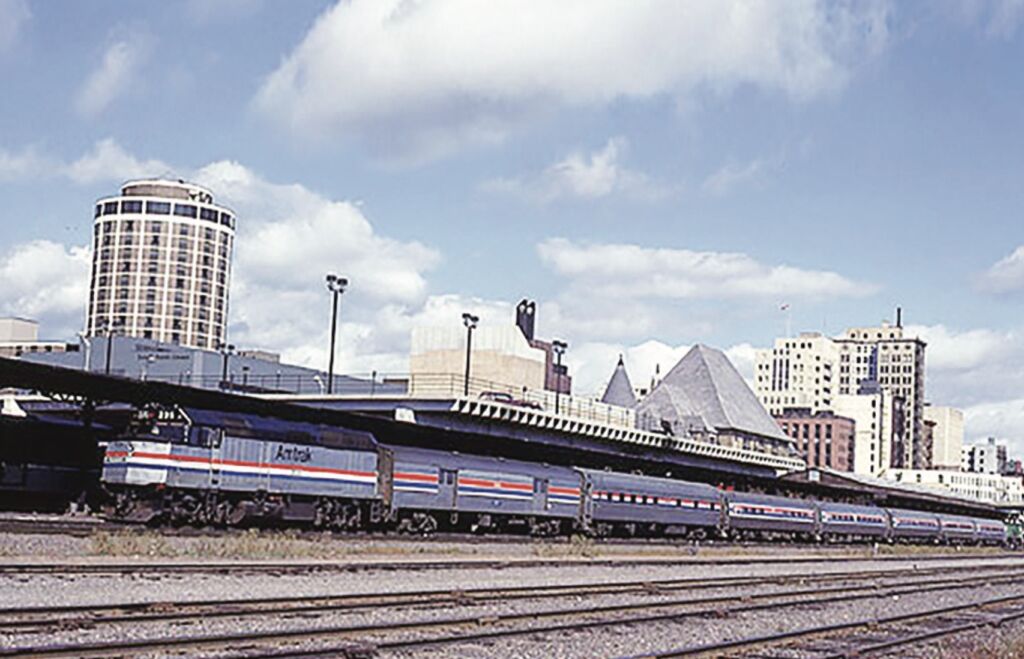Fast-tracking a slow ride
Plans to revive a failed Twin Cities-to-Duluth train service ignore history.

Those who are ignorant of history are doomed to repeat it, so goes the saying. But what of the cabal of consultants, MnDOT bureaucrats, and political insiders resurrecting passenger train service between the Twin Cities and Duluth? Ignorance in this case might be forgivable, but to sink $194 million in state funding for a $775 million taxpayer-funded boondoggle, formally dubbed the Northern Lights Express (NLX), borders on malfeasance.
Anyone familiar with the failure of Amtrak’s North Star line that folded on Easter 1985, and the complete lack of public groundswell or compelling case made for resuming service in the 40 years since, could mistake the plan for an early April Fool’s joke.
How abysmal was the defunct Amtrak line? “It is easier to pass through the eye of a needle than to travel to Duluth by Amtrak train,” legendary Minneapolis Tribune columnist Robert T. Smith observed in January 1979.
A loyal Thinking Minnesota reader, all too familiar with Northstar’s history and its lessons, provided Smith’s column, which was inspired by his family’s excursion to Duluth.
“It was to be our son Bryan’s first train trip. He’s 3, and is into trains and trucks and such,” Smith wrote. “It turned out to be one of those experiences that people think you made up. Sometimes even we think it couldn’t have happened. But it did.”
The ill-fated Twin Ports to Twin Cities line embarked in 1975. Amtrak managed to plod along for a decade, despite a third-world level of service, immortalized by Smith in his column.
“We were naïve. We had some sort of ridiculous trust that the 7:50 train would leave at 7:50,” Smith continued.
“We arrived in subzero temperatures at the Midway Station, which is carefully situated so you can’t find it. We waited in line to buy tickets and were a bit worried because it was coming onto 7:50. When we reached the ticket seller (singular), he said: “Oh, did you hear? The train is four hours late today.”
The Smith family trudged back to their car and the comforts of home to await the tardy train. There, “the fun really began.” For a couple of hours, the columnist tried phoning the depot, only to get a busy signal. When he finally managed to get through, he was informed the train was leaving in 15 minutes.
“We rushed about and drove quickly to the depot, totally frustrated, and fearing we’d miss the train. No worry. We waited an hour and a half in the depot. About 1 p.m., it finally departed.”
Lynn Johnson, the reader who shared Smith’s outrage column, happened to be on the same trip with his young family. But he says it was nothing like the trains he took growing up in New Jersey and never will be.
“Nothing has changed,” Johnson says. “It’s a huge amount of money, limited amount of passengers, and easily completed with current transportation…a tragic waste of money.”
No wonder there was already talk in 1979 about shuttering the line, six years before the end mercifully came. What’s hard to believe is that anyone with a straight face would try to bring it back.
Yet the effort to revive the route has been in the works for a quarter of a century. A feasibility study done in 2000 by the Midwest Regional Rail Initiative panning the proposed service as too slow and inefficient turned out to be barely a speed bump. Behind the scenes, U.S. Representative of Minnesota’s Eighth District and powerful House Transportation Committee Chair Democrat James Oberstar cobbled together a coalition of counties to lobby for the route in St. Paul and Washington, D.C.
Even as the train’s promised speed plummeted from 110 mph to 79 mph, the project’s price tag accelerated from $89 million in 2000 to $320 million in 2006 to $1 billion in 2009. Yet funding always popped up in time to keep the line on life support — such as the $5 million in stimulus spending that surfaced four years after the American Recovery and Reinvestment Act passed.
“Nothing seemingly slows NLX down,” I reported at the time. “Not even a controversial 2010 Benefit Cost Analysis draft report that concluded the ‘Twin Cities-Duluth HSR (High Speed Rail) Corridor has a low benefit-cost ratio.’” Taxpayers would realize a return of just 27-35 cents in benefits for every government dollar spent on NLX, according to the study, which was scrubbed from MnDOT’s website.
Along the way, Anoka, Isanti, and Pine Counties pulled out of the locally unpopular project.
“Frankly, we are not willing to gamble with the taxpayers’ dollars on a passenger rail system where I believe the studies and numbers just don’t add up,” said Rhonda Sivarajah, then Anoka County’s board chair.
Despite years of plotting and back-room deals, however, NLX faces the same nemesis as passengers past and yet to come: significant delays. Outdated design and environmental studies need updating, an agreement must be reached with BNSF, who owns the rails, and more than half a billion dollars in federal funding must flow in before construction work commences.
“The Northern Lights Express is nowhere near ‘shovel ready’ as is often cited,” the rail advocacy group All Aboard Minnesota recently warned. “This entire process could take anywhere from seven to 10 years we have been told.”
That would be 10 years too soon for Robert T. Smith.
“About 5 p.m., we finally reached someone at the Duluth depot. He knew the answer: The 6 o’clock train will leave on time — only it’s a bus.”
“A bus! I told my wife Janet and she thought it was one of the funniest lines I had created in years.”
More than 40 years later, the punchline is still the same.